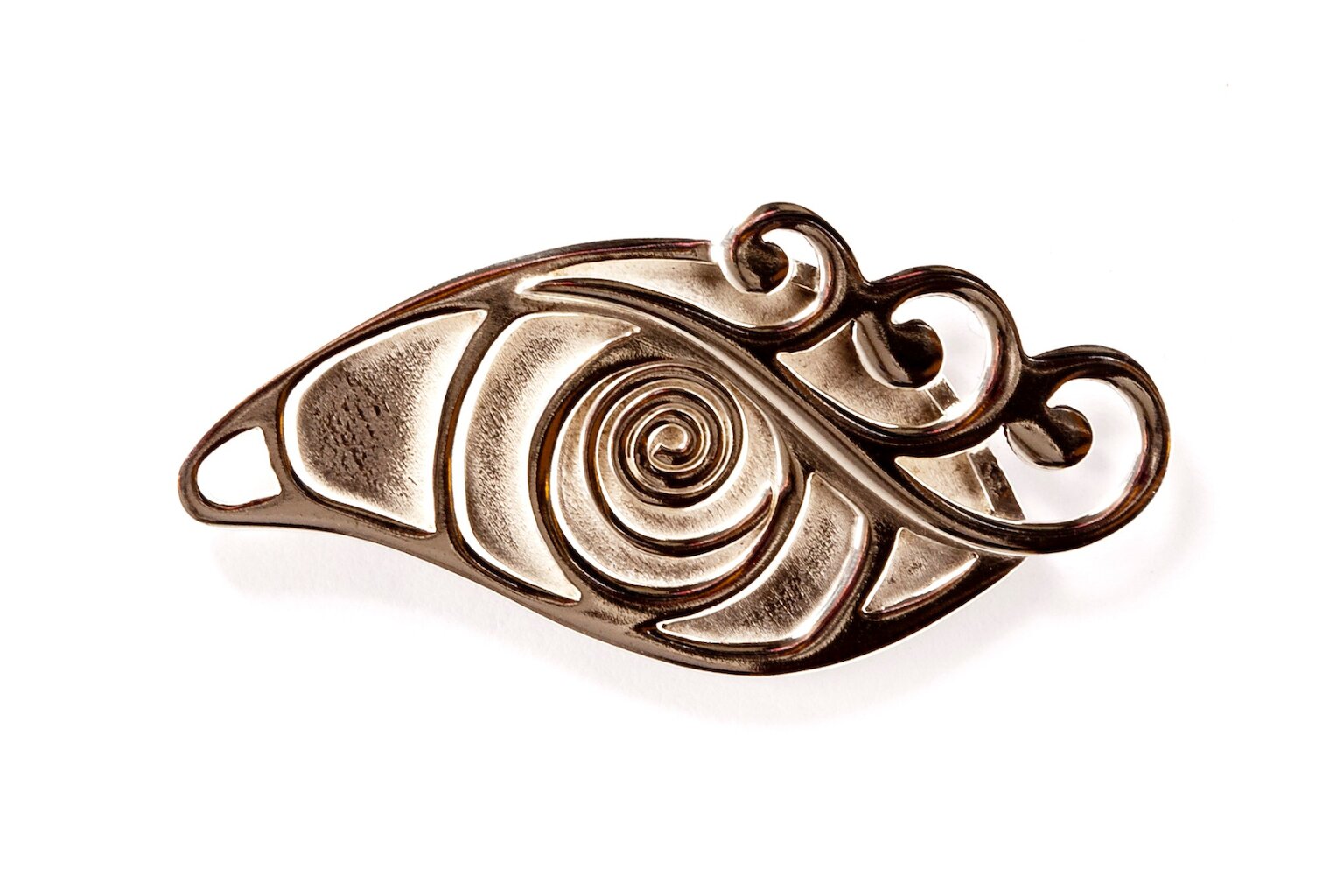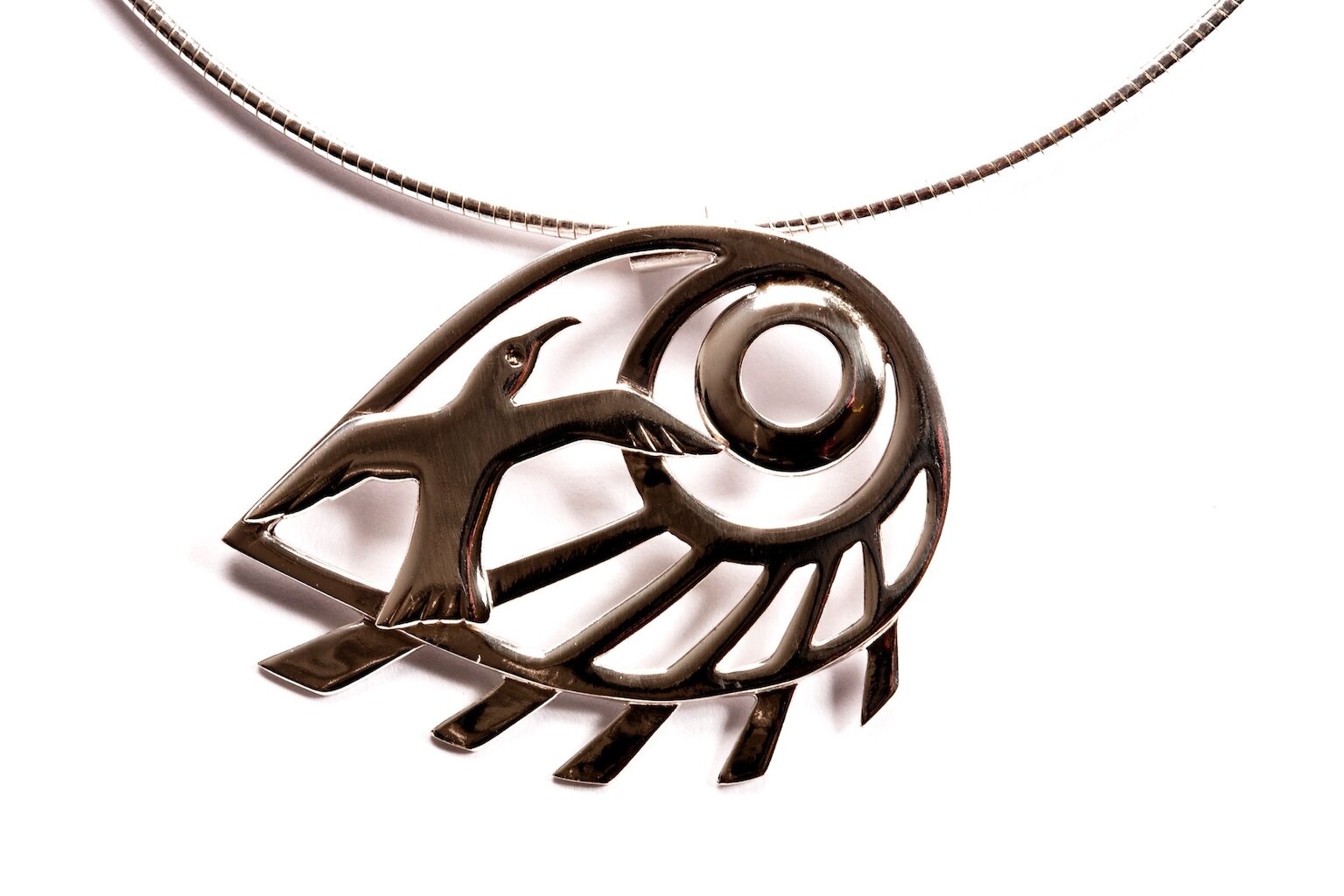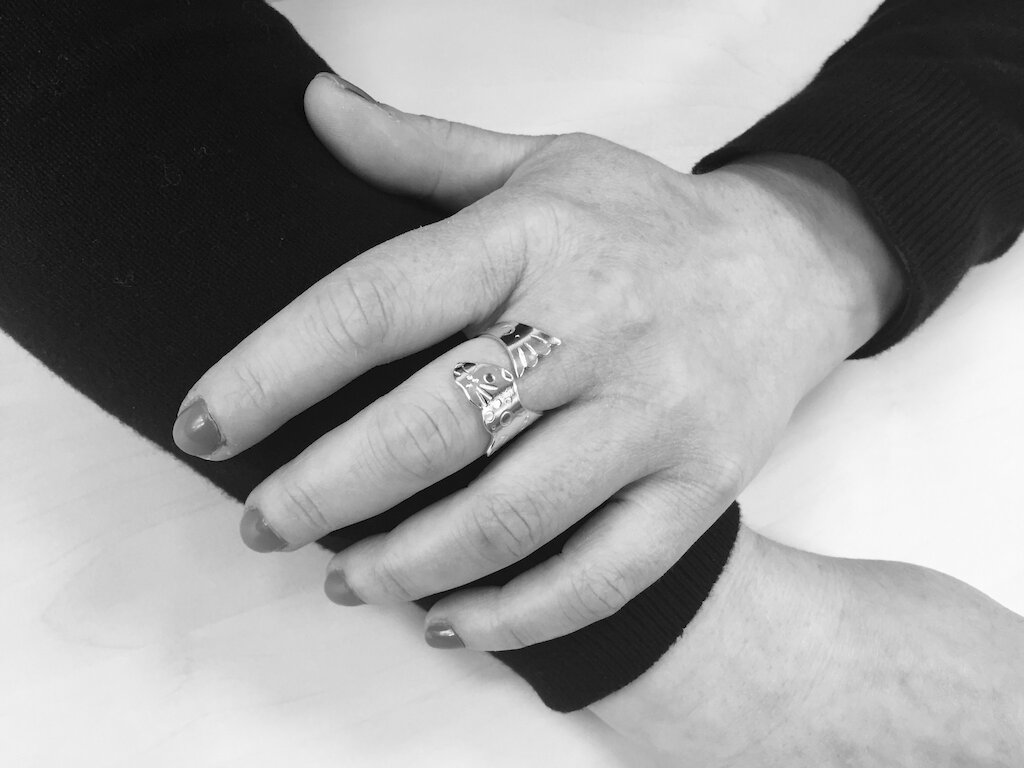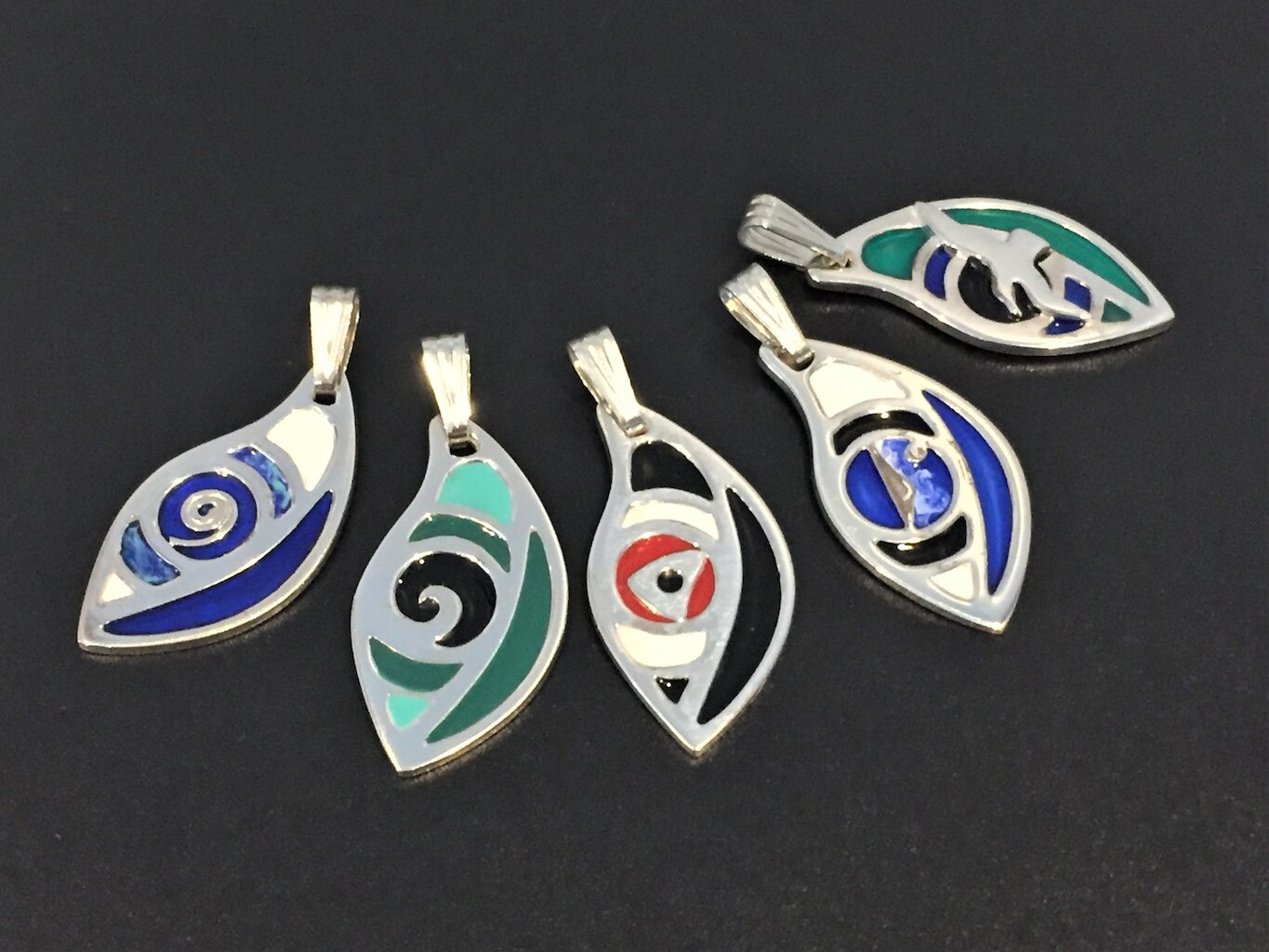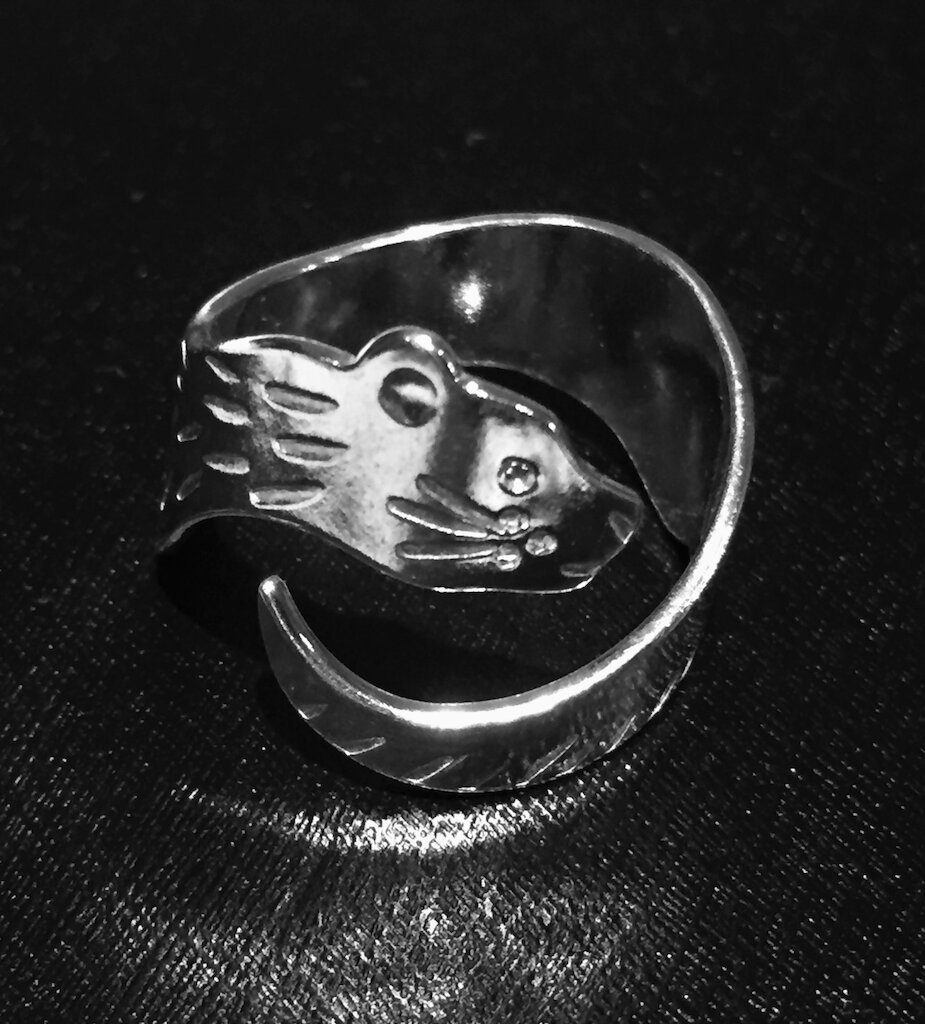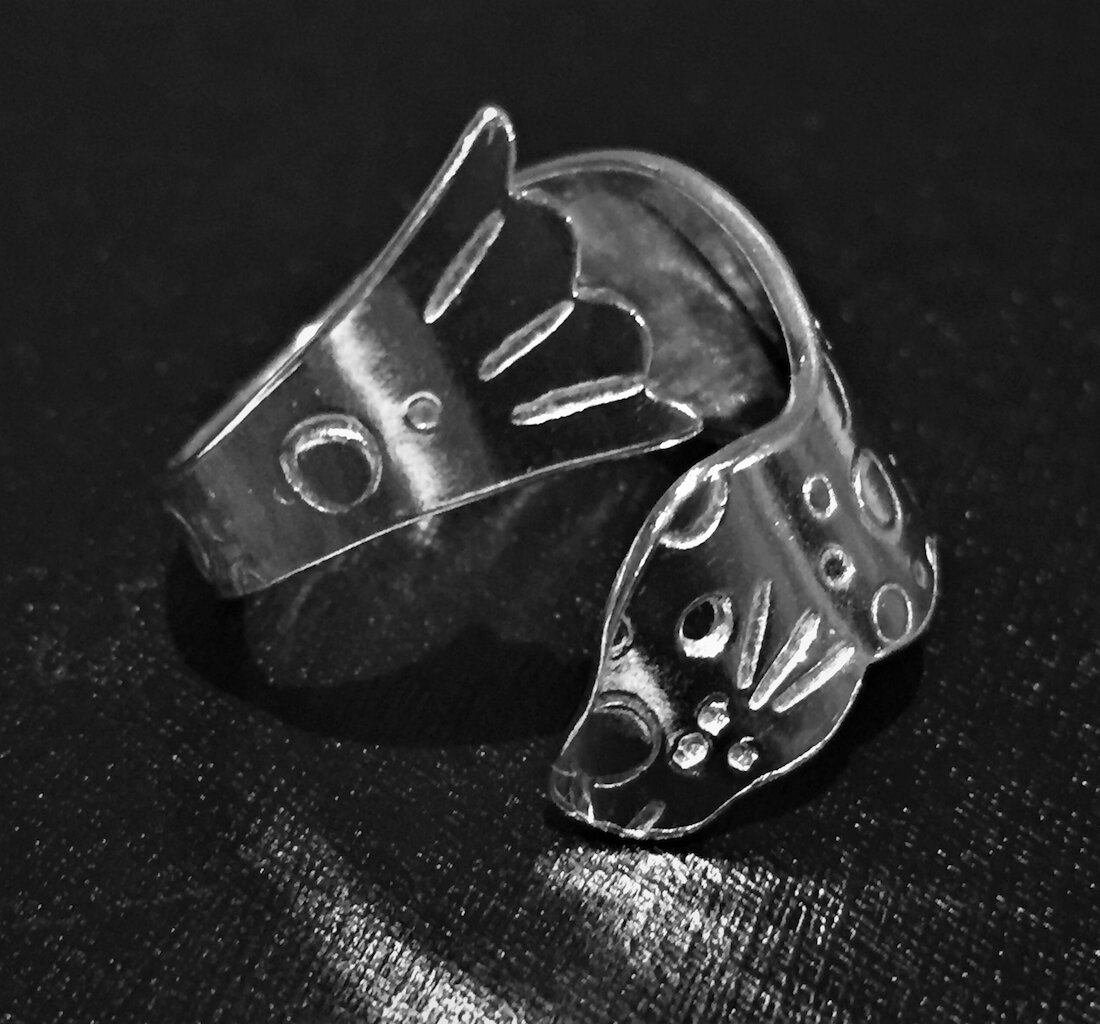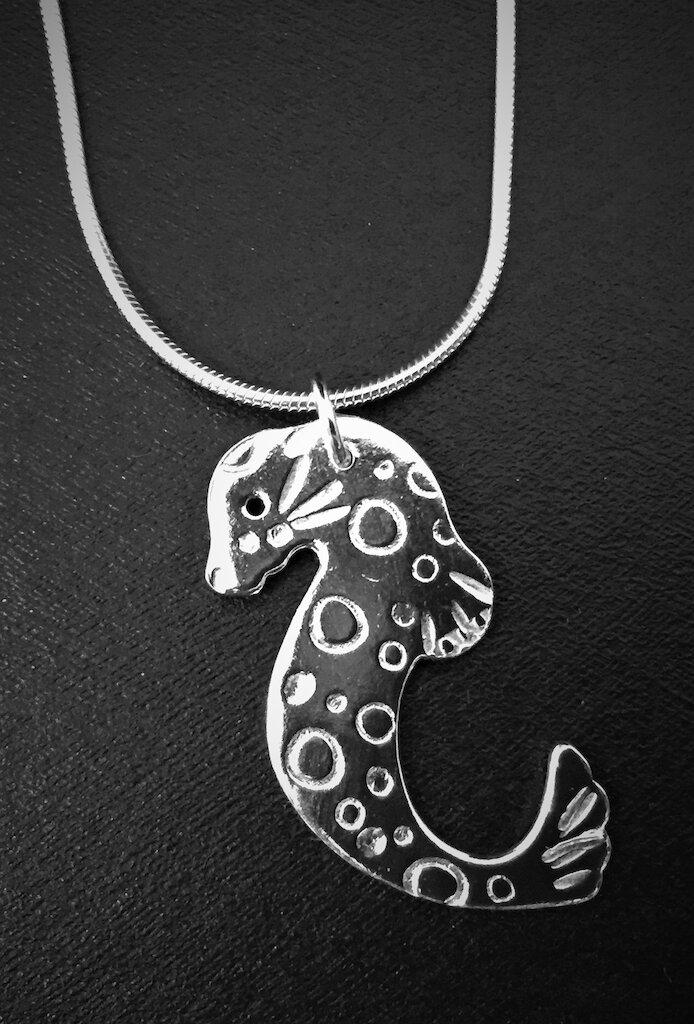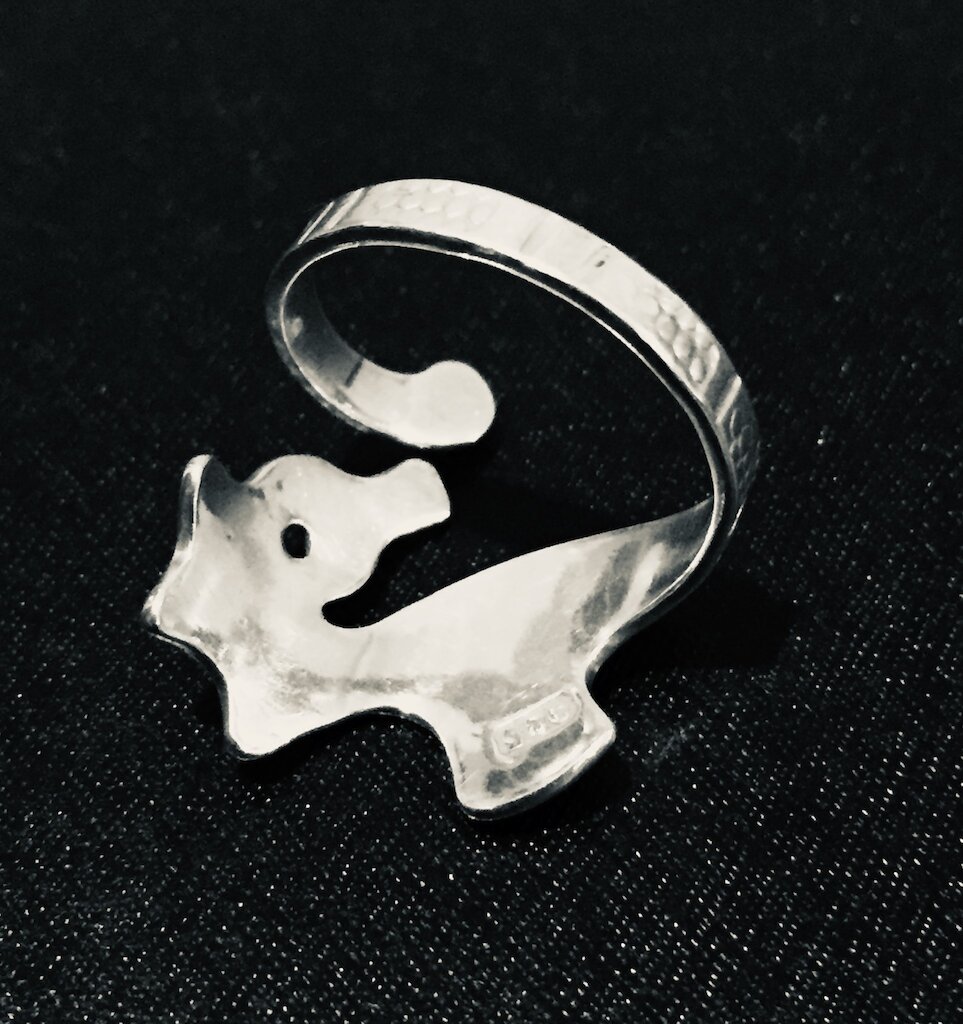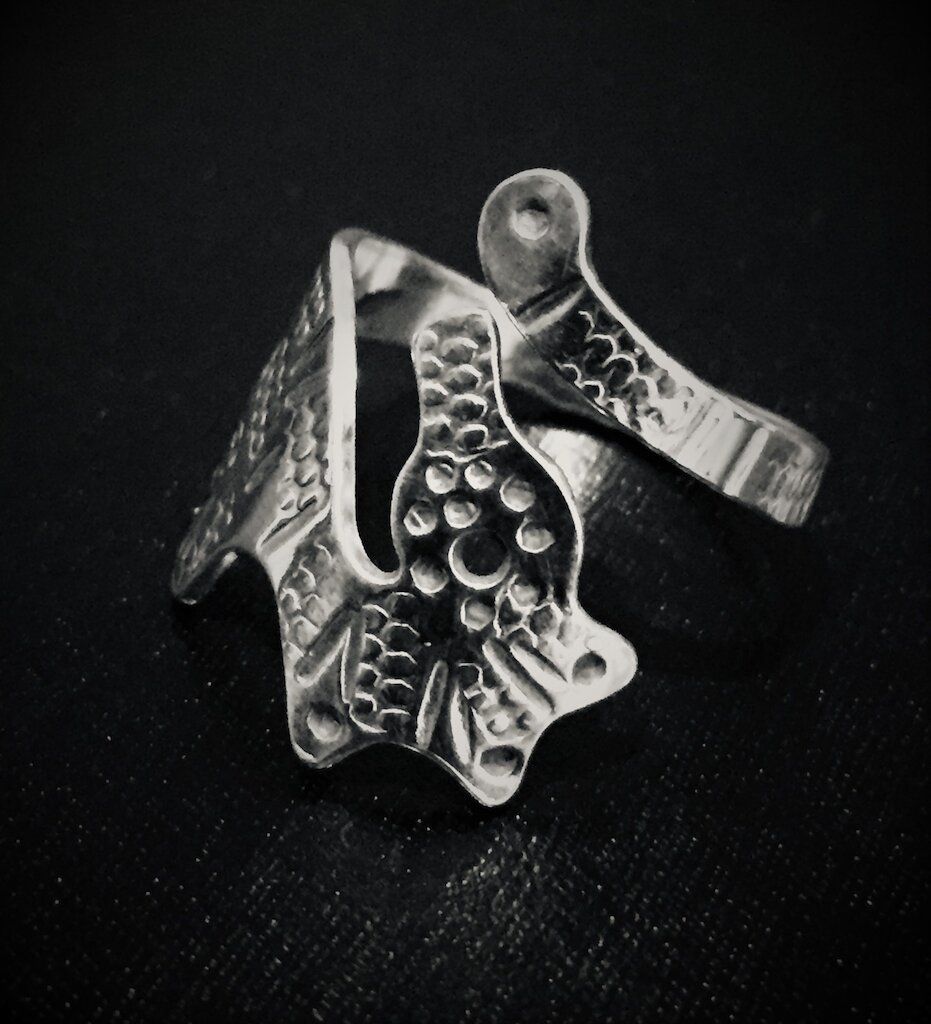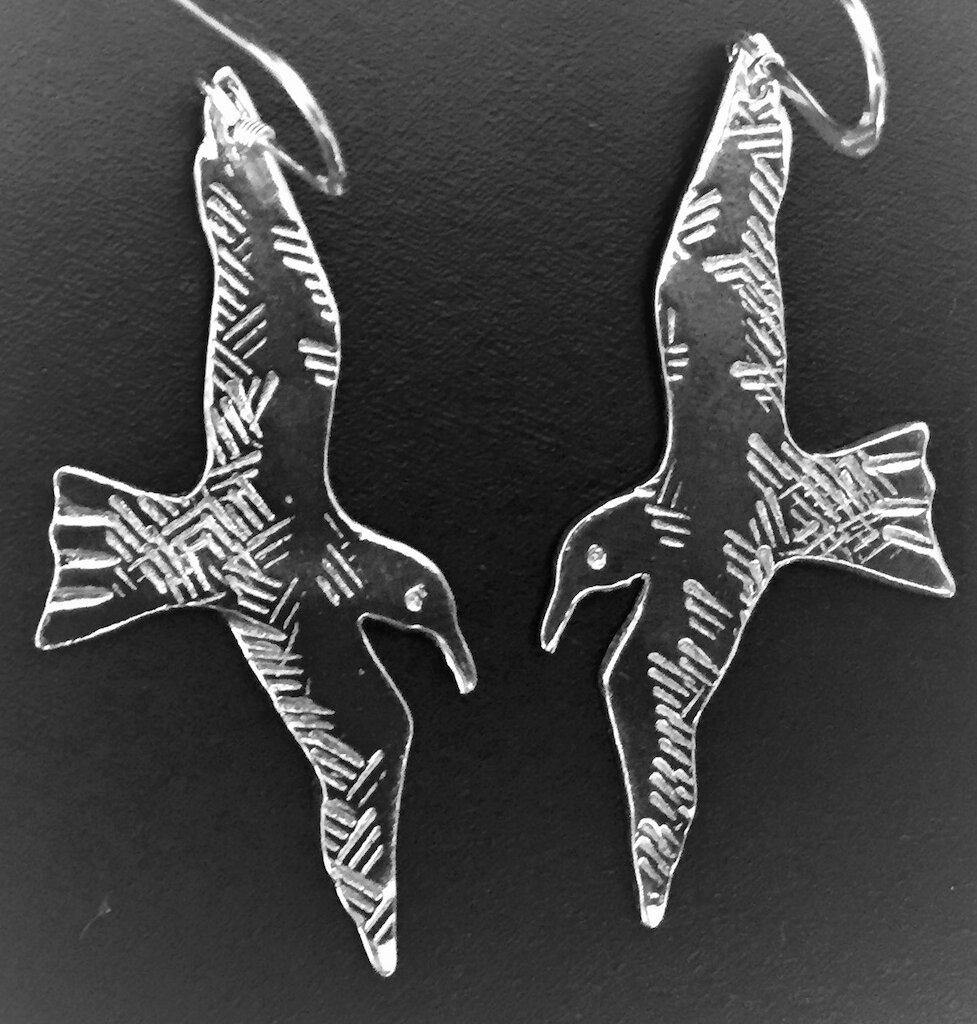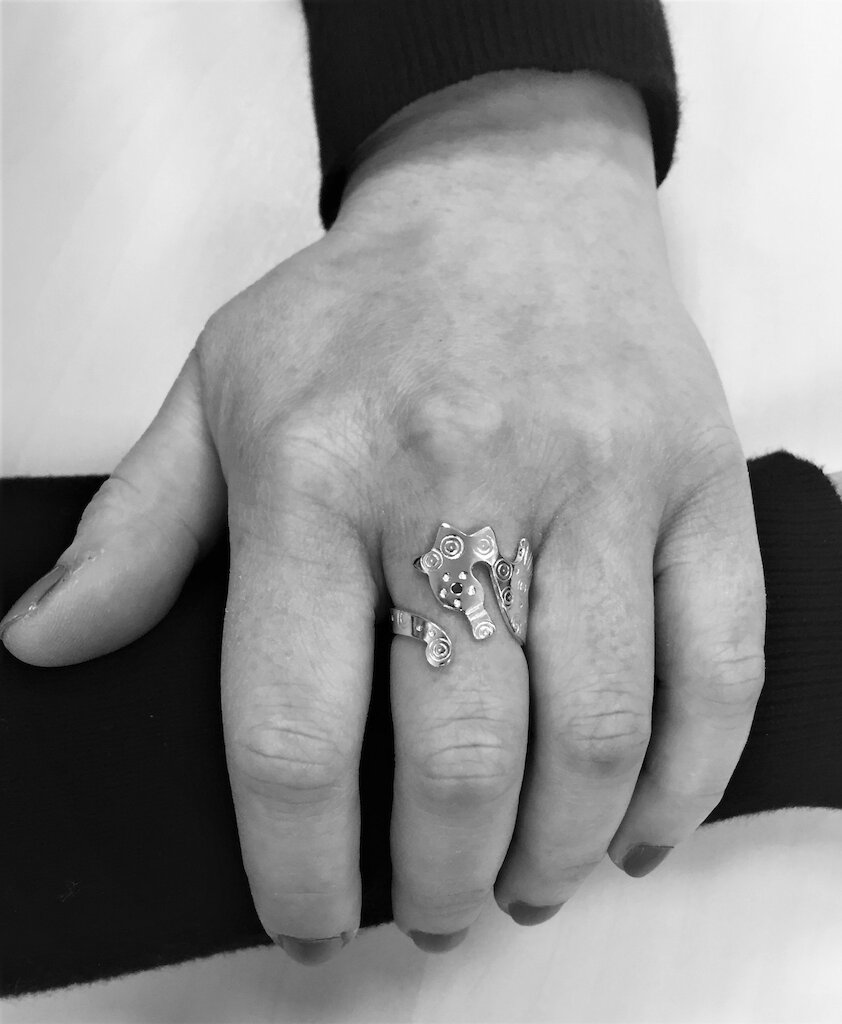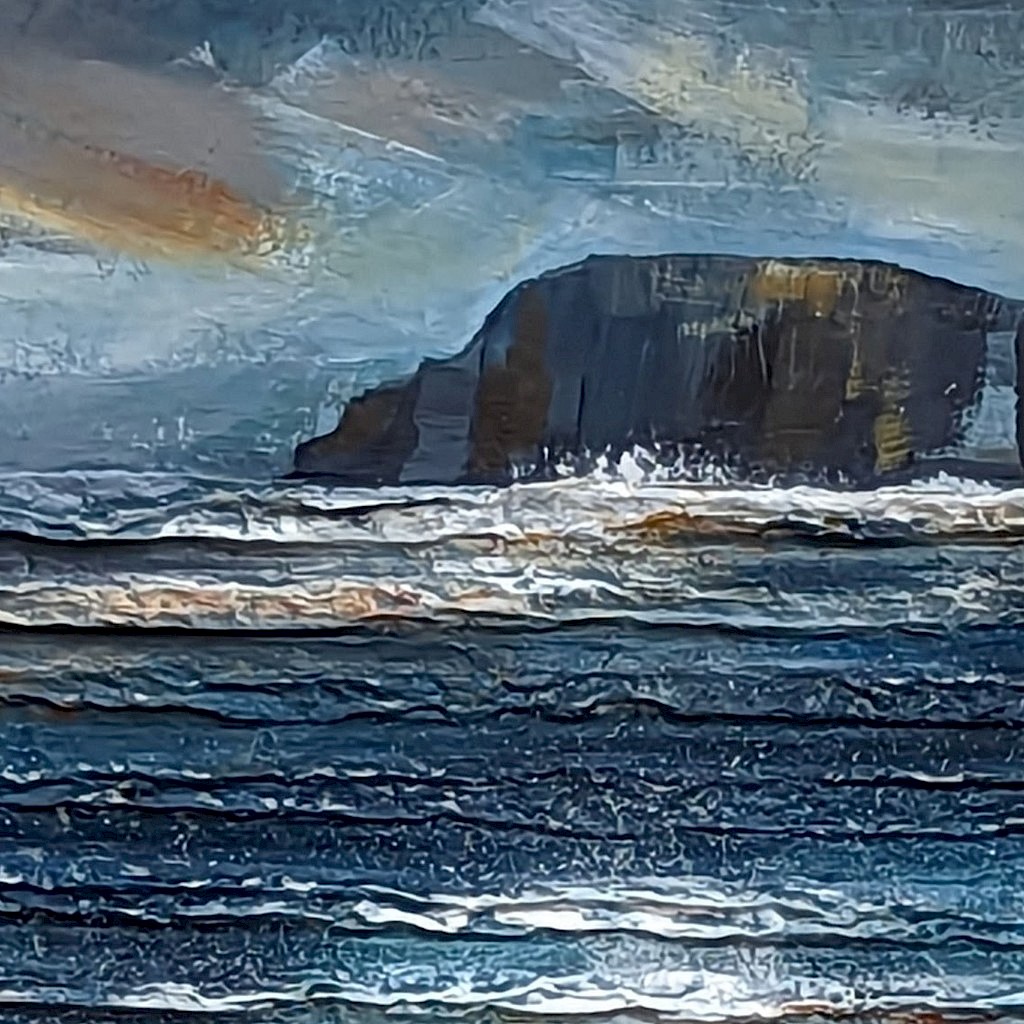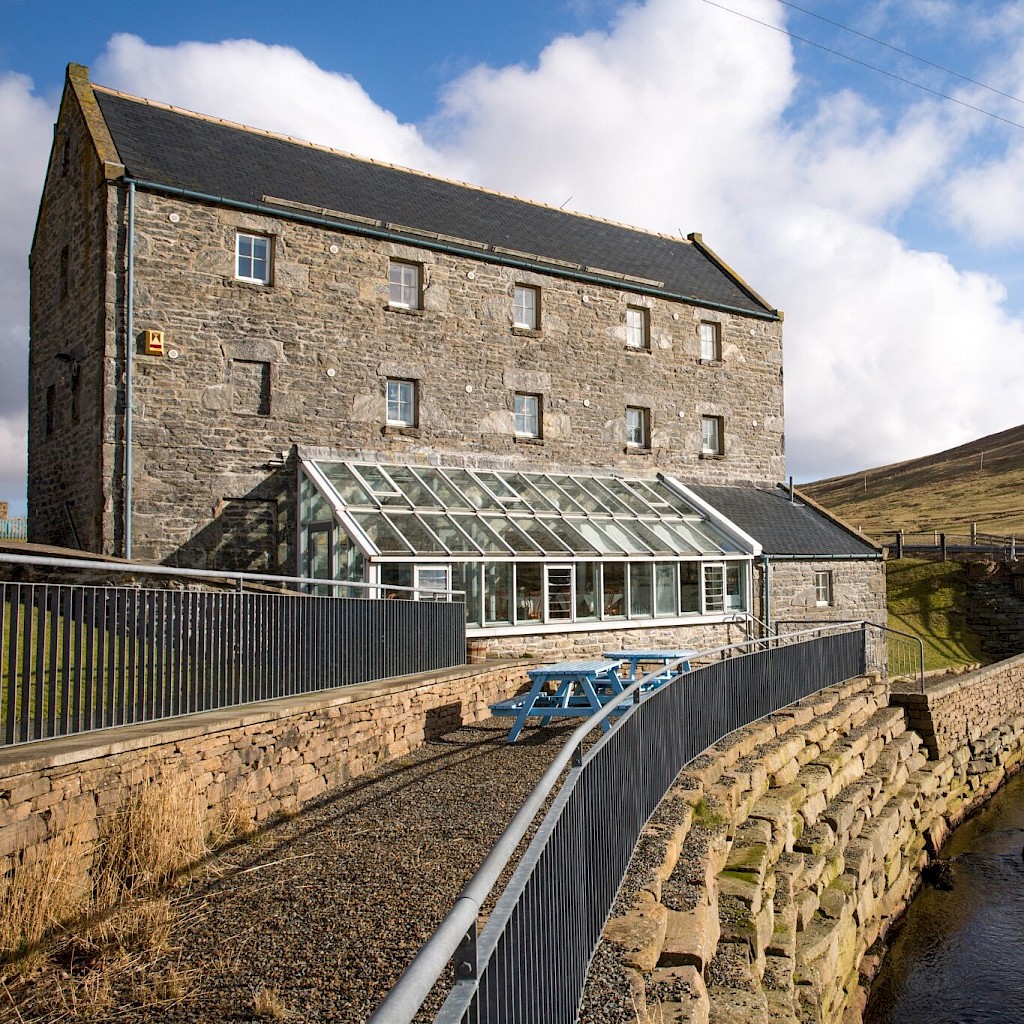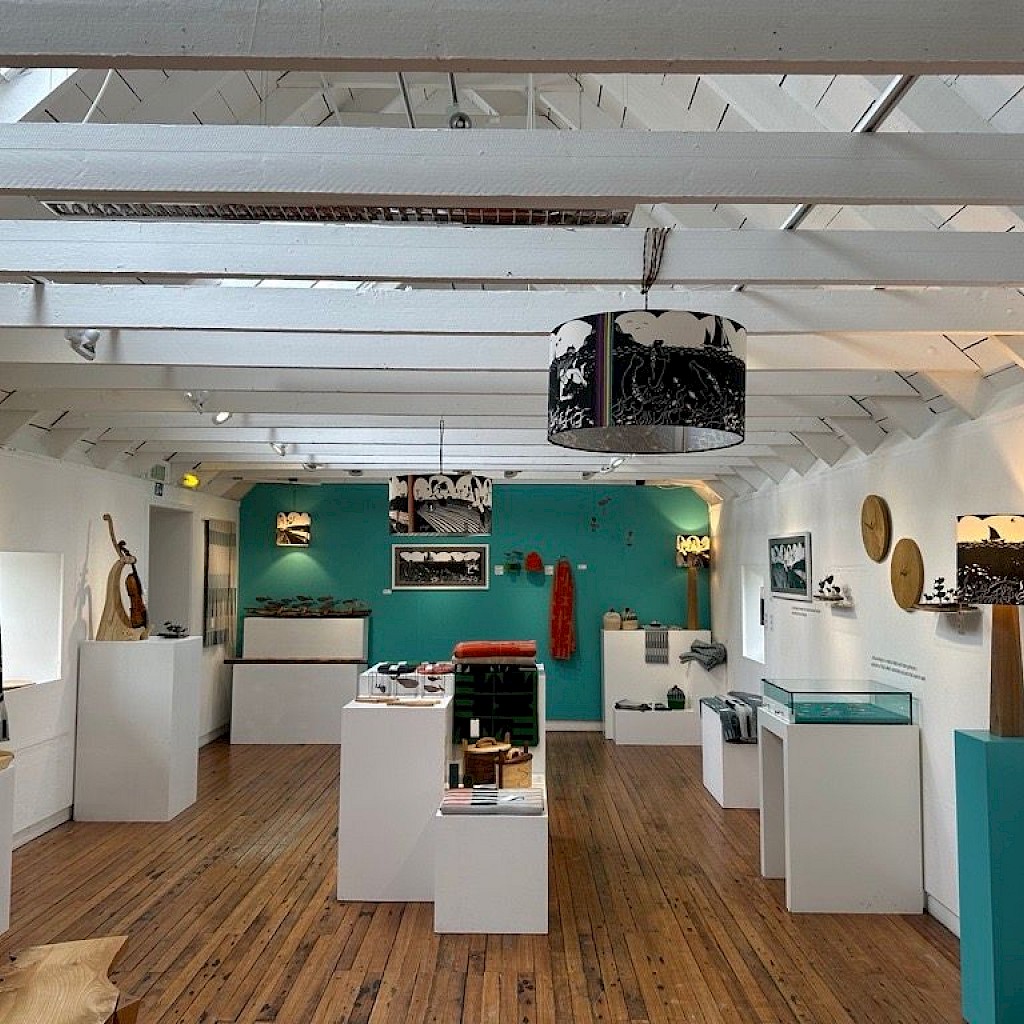I was born in Lerwick, Shetland and this is where I grew up. After leaving school, I studied at Gray’s School of Art in Aberdeen, graduating in 1993 with a B.A. Honours in Craft and Design. I moved back home a few years later and now live and work in Lerwick, teaching Art and Design at the Anderson High School.
In my spare time I design and make jewellery.
The inspiration for my designs comes from many sources, the local environment and wildlife as well as Shetland’s rich cultural history, both ancient and modern. My experience travelling over the years has also influenced me and I have a keen interest in the design traditions and trends of other cultures. Detail and anything miniature fascinates me too, natural or manmade, and from a young age have spent many hours collecting tiny shells on local beaches, I still do now!
These influences appear in my work through texture, pattern, colour and form. I mainly work in Sterling Silver fabricating pieces from sheet and wire, piercing out shapes by hand, hammering or stamping the metal for form and/or texture before soldering. Some pieces are completely hand fabricated and one off, while others incorporate cast elements and produced in batches. Casts are made by creating a rubber mould from my own metal master patterns, and then multiple wax models can be produced in Silver, using the lost wax method. I add colour to some designs using enamels or gemstones.
My designs often echo and reflect traditional or ancient forms and motifs that I translate into my own contemporary style.
Throughout history, jewellery in different cultures has been worn for many purposes and functions, not always just as a decorative item to express the wearer’s personality or style. Jewellery can have a symbolic meaning, for example it can be a love token, a symbol of status and power, a religious or ethnic symbol of identity or be a talisman to bring good luck and/or bring protection to the wearer.
The Eyeland collection developed from the pieces produced for an exhibition I was part of with Shetland Arts several years ago and the piece that started it all was, “Me, Myself and Eye”. This was a self-portrait piece in the form of an enamelled eye pendant. It contained a silhouetted profile of my head in silver, which formed the highlight on the pupil of the eye.
The eye motif is widely used in art and design, and jewellery design, e.g. “The Evil Eye” which is worn as a symbol of protection against bad luck and injury. This ancient symbol inspired the collection. I have incorporated elements of folklore and island life, eg “Tammie Norrie’s Eye Talisman”. Other pieces are a wider play on words or sayings to do with eyes, like “Eye of the Storm” or “Birds Eye View”.
The Wildlife, Talismans & Totems, collection are expandable rings based on some of my favourite Shetland wildlife. This has now developed to include other sea creatures and birds and a range of pendants and earrings too.
Many cultures throughout history have held beliefs about animals as spirit guides or totems for protection and good luck. The Picts, the Vikings and their Norse Gods had animals associated with their traits, personalities, as do Native Americans.
Otters are associated with water, which is symbolic of life, creativity, fluidity and transitions. Water is also a cleansing element and otters are also associated with healing and protection.
In Shetland, Orkney, Faroe and Ireland there are many folklore tales of the Selkies, mythological beings that were capable of transforming from a seal to a human by shedding their skin. As a totem, animal seals are symbolic of imagination, intuition and inner strength. As well as peace and destruction, similar to the eastern concept of ying and yang - contradictory opposites that exist in all things.
In many cultures the seahorse is considered to have magical properties, as it is the male that carries the offspring. Seahorses are a symbol of protection, strength and luck. Ancient Greeks believed the seahorse was an attribute of the sea God Poseidon and so was considered to be a symbol of strength and power.
Ancient Europeans believed that the seahorse carried the souls of deceased sailors safely to the underworld, and in Chinese culture, the seahorse was believed to be a sea dragon, and a symbol of power and good luck.
